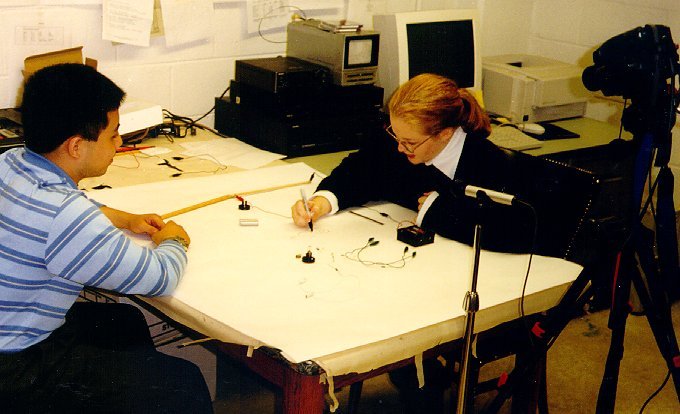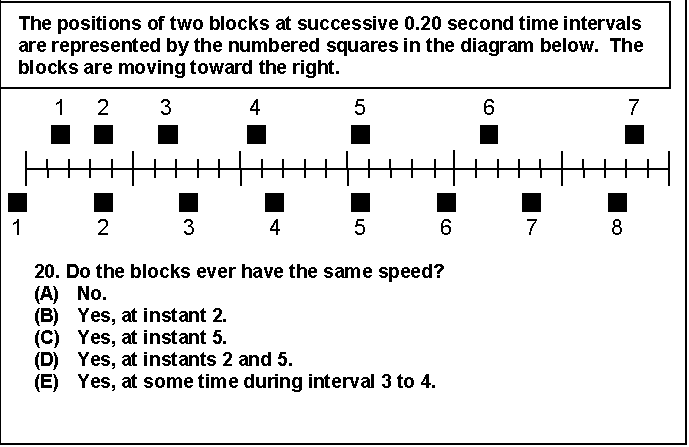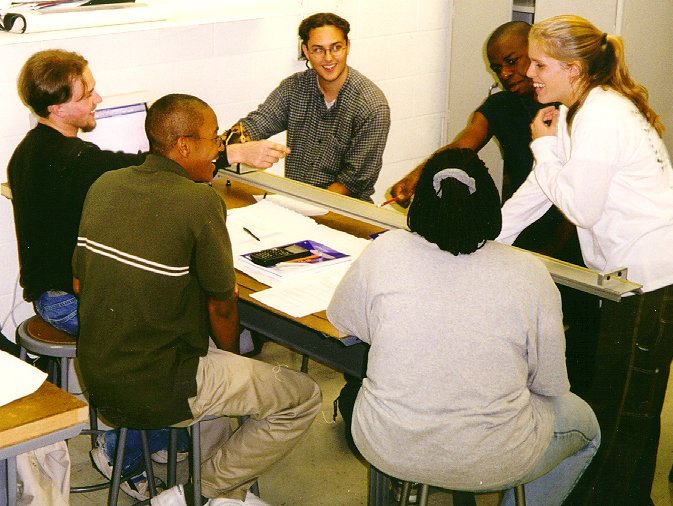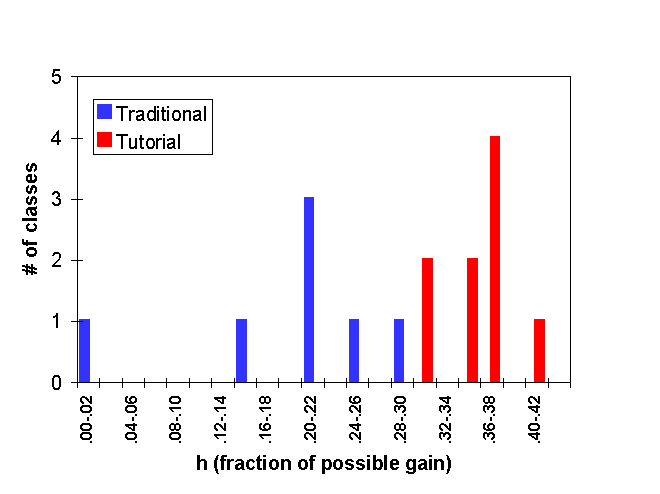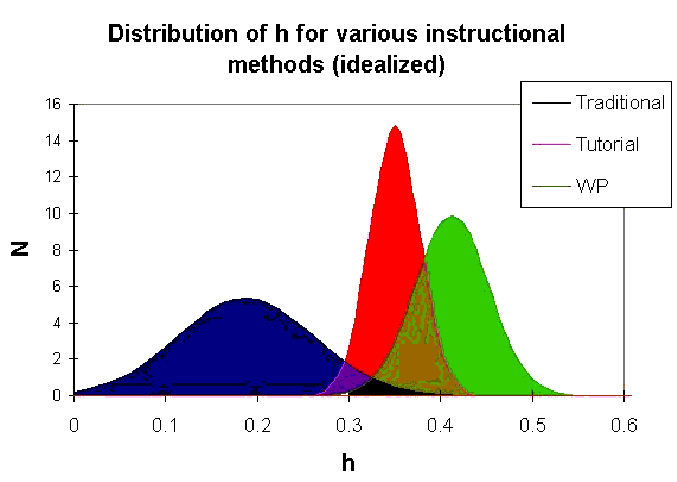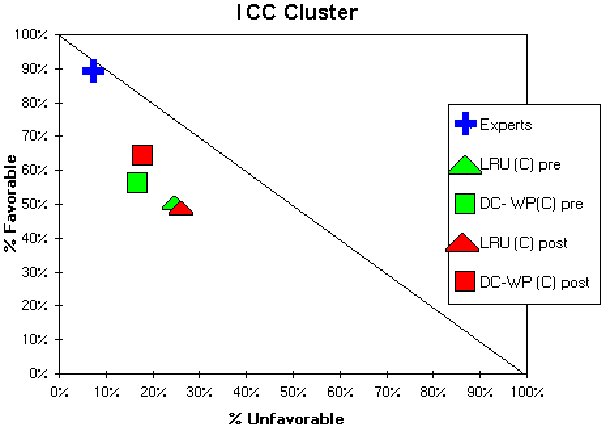Teaching Physics:
Figuring Out What Works
Figuring Out What Works
University of Maryland, College Park
in our physics classrooms and permits us to create more effective instruction.
© American Institute of Physics, 1999
This article originally appeared in Physics Today , Vol.
52 (January 1999), pp. 24-30.
 This work was supported in part by NSF grants DUE 945 5561 and
DUE 965 2877.
This work was supported in part by NSF grants DUE 945 5561 and
DUE 965 2877.
Introduction
Many physics faculty come away from teaching introductory physics deeply dismayed with how little the majority of their students have learned. Even worse, the growing importance of technological literacy in the workplace makes it increasingly important for us to provide value to more of our students.
Introductory courses are often designed for the prospective professional with many topics treated superficially to provide a context for later study, and with an emphasis on mathematical manipulations and structures. These mathematical structures may later serve as a framework for building a strong and well-organized understanding of the subject in which concepts and knowledge structure are tightly woven into the mathematics.
Most of our students, however, will not have the opportunity to study physics beyond a single course. More than 95% of students in introductory physics will never take another physics class. 1 Even engineers, many of whom will study the behavior of physical systems in their engineering classes, often use a distinctly different approach, and one which does not necessarily bridge the gaps that remain after introductory physics. The adage that "they need to see the material several times and then they will understand it when they teach it" is just not relevant to most of our students. Fortunately, evidence suggests that with the right kind of learning environment, a single pass through physics can be a valuable learning experience for the majority of students. 2
If we want to figure out what we can offer students in introductory physics (and beyond), we have to understand a number of distinct but interlocking topics. (1) What is involved in understanding and using physics? While this might seem obvious or even trivial to the professional, many of the components of our understanding are normally invisible to us. Careful observation and analysis of the physics content and of the behavior of experts is required. (2) What do our students bring to our physics classes? How our students hear and interpret the material presented to them in a physics class is heavily dependent on the experiences they bring to the class. Everyone has some sense that a force is necessary in order to maintain a velocity when walking, driving, or pushing something along the floor. Newton's second law is inconsistent with the way that many of our students have made sense of their experiences in the world. (3) How do our students respond to our physics instruction? We often assume that students will respond as we did, or rather, as we might have wished we did, knowing what we know now. To design effective instruction, we must learn how students really respond.
A growing number of physicists are studying these topics, bringing together an analysis of the components and structure of physics knowledge with the observation and analysis of student behavior. The field of physics education research (PER) is a growing sub-discipline of physics.
Figuring out what works: Discipline-based education research
When it becomes difficult to make sense of a situation, we need to become researchers ó to combine observation and analysis to figure it out. When the subject is our students, we become physics education researchers. At the heart of physics education research is a shift in emphasis in physics instruction from What are we teaching and how can we deliver it? to What are the students learning and how do we make sense of what they do? In order to make this shift, we need to listen to the students and find ways to learn what they are thinking. Only then do we begin to make sense of how students learn physics in a way that helps us improve our courses meaningfully.
What is required goes well beyond how even good teachers interact with their students. We both have observed classes and seen frequent cases where an instructor listened, but failed to recognize the student's real difficulty. For example, in a junior level electronics class a student asked a question about a comparison of currents at two points on a single branch of a relatively complicated circuit. Like many physics instructors, the professor in this class was a concerned and dedicated teacher. He listened carefully to the student and recognized that the student was confused. But instead of asking questions to determine why the student was confused, he proceeded to give a detailed description of how the entire complicated circuit worked. However, since the current was necessarily the same throughout the branch of the circuit, it was likely that the student's difficulty was a deep one ó not addressed in the instructor's response ó that the current was "used up" en route. 3 The student politely nodded (no better off than before) and the teacher moved on.
In trying to find out what students' real difficulties are physics education researchers use a variety of tools. One task is to determine the "state space" ó the range of most common possibilities. . One way to do this is to carefully interview a number of students, letting them describe what they think about a particular situation or having them work through a problem. The researcher encourages the students to "think aloud" and to explain their reasoning. The goal is not to help the students come up with the "correct" answer but rather to understand their thinking. Interviews are videotaped, transcribed, and analyzed by multiple researchers. A photograph of a typical interview session is shown in Fig. 1. Interviews often reveal new insights into the way students think about physics that are surprising even to the most skilled and experienced instructors.
